Iran needs 550 passenger airplanes to be able to adequately meet market demand, the head of Civil Aviation Organization of Iran (CAO), Mohammad Mohammadi-Bakhsh, said in a recent meeting of government officials about the country’s air transportation status.
“A full-blown war is being waged by world powers against the Islamic Republic in the aviation industry. We are pursuing our goals in the four areas of manufacturing, repair and buying secondhand and brand new aircraft,” he was quoted as saying by Fars News Agency.
In an interview with IRIB News, Mohammadi-Bakhsh, who is also a deputy roads minister, said currently there are 175 operational planes in Iran’s air fleet.
“We have a total of 335 planes, 175 of which are operational and the rest have been grounded,” he said, noting that 11 operational planes are used to only transport cargo.
Iran’s aviation sector has for years been facing US sanctions that prevent it from procuring vital spare parts for repair, leaving many planes grounded and causing technical problems every now and then.
Hamid Ghavabesh, the former head of Iranian Airlines Association, told the Persian economic daily Donya-e-Eqtesad that even operational planes in Iran have their own limitations when it comes to flying.
“Note that operational planes are not capable of flying for a long time; many of these planes fly only twice, the total efficiency of Iranian planes is between three and four hours; sometimes they are incapable of flying after one roundtrip flight,” he said.
“This is while the young planes of Iran's neighboring airlines, such as the airlines of Arab countries and Turkey, are able to fly for a full day.”
The former head of the Iranian Airlines Association noted that the average age of planes in the Arab countries and Turkey is five to six years whereas the average age of Iranian aircraft is estimated to be 28 years; some older aircraft are also among Iran’s air fleet.
“Except for the limited number of planes purchased after the conclusion of the Joint Comprehensive Plan of Action [the formal name of the Iran nuclear deal], there is no new aircraft in the Iranian air fleet,” he added.
Fifteen planes were purchased after JCPOA, 13 of which were small ones manufactured by ATR Aircraft. In other words, only 4.5% of Iranian aircraft are new.
Even the newly purchased ATR planes have run into technical problems now.
“Almost all of these planes [ATRs] have been grounded, but we plan to get them back to flying over time,” he was quoted as saying by Fars News Agency on Dec. 19.
According to Mohammadi-Bakhsh, the Franco-Italian aircraft manufacturer failed to live up to its commitment after selling the ATR planes to Iran.
“They even failed to provide us with technical publications and maintenance manuals, let alone parts,” he added.
Iran was also delivered three Airbus after the JCPOA revival, one A321 and two A330s.
According to the CAO chief, the European multinational aerospace corporation has also failed to provide the needed support and after-sales services.
Domestic Airlines on Brink of Bankruptcy
Low productivity and frequent repairs of Iran’s old planes have increased the prices of air tickets; the operation of small airlines is not economically feasible, pushing some of them to the brink of bankruptcy. They are renting or selling their old aircraft to other larger airlines.
“Supplying parts is very expensive. Purchasing aircraft parts under sanctions at times imposes a 30% higher cost on airlines. Some aircraft parts dealers take advantage of sanctions and sell substandard parts to Iranian airlines, which raise the risk of air transportation in the country,” Ghavabesh said.
All airlines are loss making and their income from the sale of ticket is negative (it costs more than what it is sold), the head of the Association of Iranian Airlines, Abdolreza Mousavi, said earlier this year.
“We’ll have to compromise on the safety of flights, if we fail to solve economic problems,” he was quoted as saying by Mehr News Agency at a press conference in July.
Noting that 60% of the costs of airplanes, including the price of airplanes, parts, pilot training, publications, engine oil, lubricants and tires, floor carpets and seat covers have to be paid in foreign currencies, he said the depreciation of the national currency leads to an astronomical rise in ticket prices.
“Value-added tax and duties account for 11% of the price of each ticket; the engine repair costs of an Airbus have reached $5 million and the engine repair cost of each landing and takeoff is $5,000. Local engine oil does not meet international aviation standards and cannot be used in the civil aviation industry,” he said.
“Passenger insurance is among other expenses airlines have to pay in foreign currency. Domestic insurance companies are not capable of providing passenger insurance; we have to avail ourselves of foreign insurance. Moreover, pilots have to take simulation-based training courses every six months; these expenses have to be paid in foreign currency as well. Not only is the costs of airplanes’ landings and takeoffs in international flights have to be paid in foreign currency, but the costs of airport services also need to be disbursed in cash.”
Mousavi said domestic airport expenditures for Iranian airlines have increased 70-fold in the past 10 years.
Domestic Repair, Maintenance to Keep Aircraft Flying
Mohammadi-Bakhsh pointed out that no aircraft is sent abroad for repairs and all the work is undertaken by local engineers.
“We are facing a severe shortage of expert manpower for repair, maintenance, design and manufacturing,” he said.
Earlier this month, Ramon Hamzeh, a member of the Association of Iranian Airlines’ Board of Directors, announced that local technicians have successfully overhauled an A320-200 Airbus.
According to the official, it took more than six months to overhaul the plane and more than 2,200 parts had to be replaced.
“This aircraft, which was imported in the fiscal 2012-13, was used as a storehouse for parts. In 2020, it was decided that the plane should resume flights, but the overhaul process was delayed by financial problems. In the end, we managed to procure $4 million worth of parts,” he was quoted as saying by Mehr News Agency.
Noting that the overhauled aircraft will soon resume active service, Hamzeh, who is also the CEO of Iranian airline Qeshm Air, said the plane will be used to operate international flights.
Spokeswoman of Taban Airlines Marziyeh Afar-Doust also announced on Dec. 20 that a 168-seater McDonnell Douglas (later Boeing) MD-88 has returned to service “to transport thousands of passengers on domestic and international routes.”
Local Plane Manufacturing Plans
Deputy Industries Minister Manouchehr Manteqi recently announced that Iran and Russia are considering the joint production of airplanes with a capacity of 70-150 passengers.
However, there are serious concerns whether the market would welcome the operation of such aircraft.
In 2000s, Iran started to locally assemble Iran-140, a license-built version of the Ukrainian turboprop regional airliner An-140, from complete knock-down kits supplied by the manufacturer Antonov.
As of 2008, 13 aircraft per year were planned to be constructed. There were plans to produce maritime patrol (Iran-140MP) and freighter (Iran-140T) versions. A hundred aircraft in total were planned to be built; 20 of them were to be acquired by the Iranian government for border patrol and surveillance.
On Nov. 9, 2010, Iran announced that 14 IrAn-140 aircraft had so far been completed; the first six entered commercial service on Feb. 19, 2011.
On Aug. 10, 2014, Sepahan Airlines Flight 5915, an Iran-140-100, crashed shortly after taking off from Tehran’s Mehrabad International Airport. The aircraft was on a domestic service to Tabas.
According to initial reports, around 40 passengers and 8 crew members were on board the aircraft, which broke up and burst into flames. It was reported that the aircraft suffered an engine failure shortly after takeoff. There were 10 survivors.
The aircraft was built in 2008 and was fitted with the Klimov TV3-117VMA-SBM1 engines. Survivors reported that the number two engine had stopped during takeoff.
After the crash, An-140 operations were banned by the Civil Aviation Organization of Iran, with all remaining Iranian-registered examples grounded.
Noting that Iran has a long way to go before it can manufacture a reliable aircraft, Ghavabesh told the news portal of Iran Chamber of Commerce: “Assuming that Iran has acquired the technical knowhow in producing airplane parts, we cannot focus our efforts on supplying domestic needs when it comes to plane manufacturing … This would only squander our resources and is not reasonable. Only when we reach the capacity to compete in international markets and sell our products in other countries does foray into this industry make sense.”


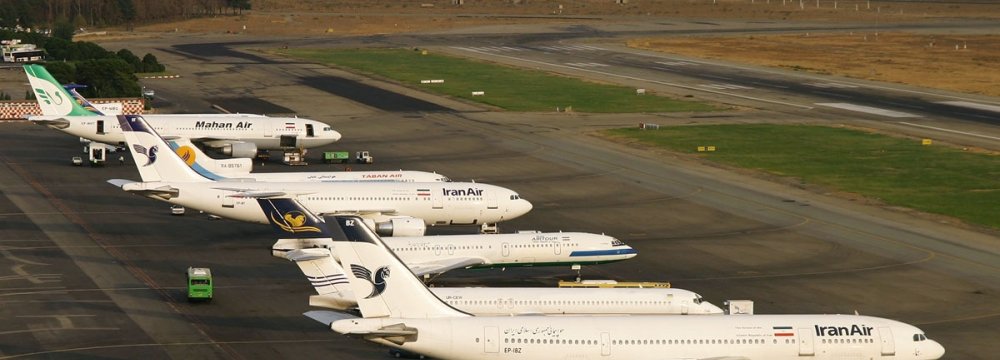
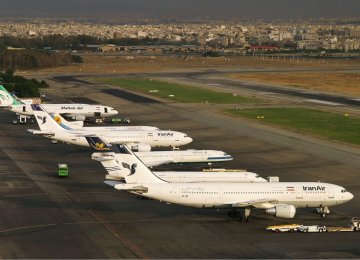
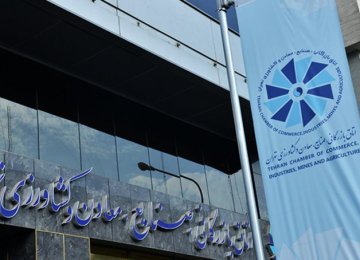
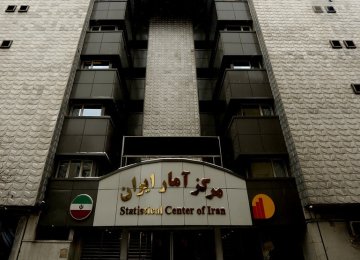
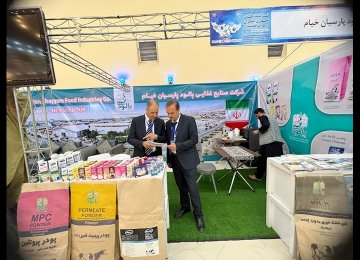
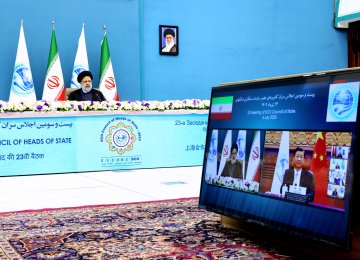
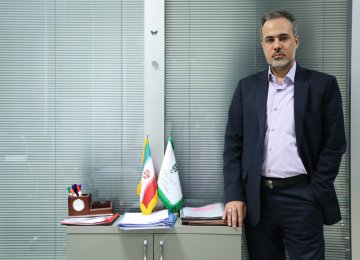
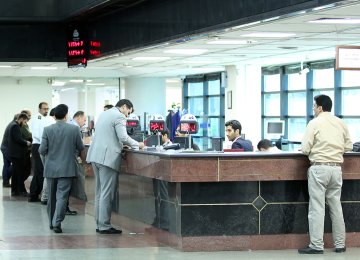
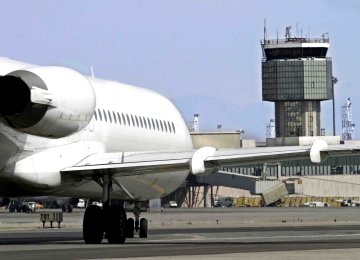


Add new comment
Read our comment policy before posting your viewpoints